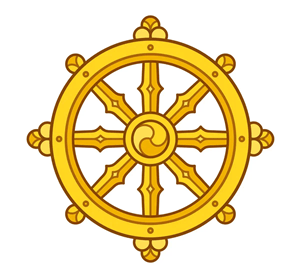- Trending:
- Easter
- |
- Lent
- |
- Forgiveness
- |
- Resurrection
- |
- Joy
- |
- Feminism
Buddhism Overview
Most historians agree that Buddhism originated in northern India in the 5th century B.C.E. The tradition traces its origin to Siddhartha Gautama (or Gotama), who is typically referred to as the Buddha (literally the "Awakened" or "Enlightened One").
Siddhartha observed the suffering in the world and set out to find an antidote. Through meditation and analysis, he attained an enlightened state of being that marked the end of attachments (and therefore suffering), and ultimately, upon his death, release from the cycle of rebirth (samsara).
The Buddha's teachings are often summarized in the Four Noble Truths, which form the basis of the first sermon he delivered after attaining enlightenment, and the Eightfold Path, which provides a basic guide for how to live in the world. Over the course of its 2500-year history, Buddhism has experienced many schisms and modifications; there are currently three major branches of the tradition — the Theravada ("Doctrine of the Elders"), the Mahayana ("Great Vehicle), and the Vajrayana ("Diamond Vehicle," often simply called "Tibetan Buddhism"), although there are many sects and groups within each of these branches.
The Buddhist canon consists of a vast corpus of texts that cover philosophical, devotional, and monastic matters, and each of the major divisions of Buddhism has its own distinct version of what it considers to be canonical scriptures. Buddhism has spread from its roots in India to virtually every corner of the world, and in each place it has spread it has adopted and adapted local practices and beliefs. Although Buddhism is a distinct religious tradition, many people in the contemporary West have adopted philosophical and practical aspects of Buddhism and incorporated them into their religious and social practices; thus there are people who identify themselves "Buddhist Christians," "Buddhist Jews," and "Buddhist Atheists."
Learn from Buddhist writers about its origin, history, beliefs, and modern applications on our Buddhist writers channel. This library resource dives into more of an academic viewpoint of Buddhism beliefs and history. Patheos has a repository of videos and Q&As to address the most asked questions about Buddhism. Check out the Buddhist Answers series on Patheos.
Quick Fact Details:
- Formed: The exact dates of the Buddha's birth and death are disputed.
- Deity: Certain branches of the larger Buddhist tradition (including the Mahayana) include a variety of gods and goddesses; others, especially the Theravada, reject belief in an omnipotent deity.
Quick Fact Sources include www.adherents.com, www.bbc.co.uk/religion, The Oxford Handbook of Global Religions (2006), The Encyclopedia of Religion (2005), the Religious Movements Page at the University of Virginia, The Cambridge Illustrated History of Religions (2002), and the Encyclopedia of World Religions (1999).
Quick Facts
| Formed | c. 5th century B.C.E. |
| Adherents | 350,000,000 |
| Deity | None / pantheon of deities |
| Sacred Text | Pali Tipitika, Mahayana, Vajrayana Canons |
| Origin | INDIA |
| Headquarters | NONE |






